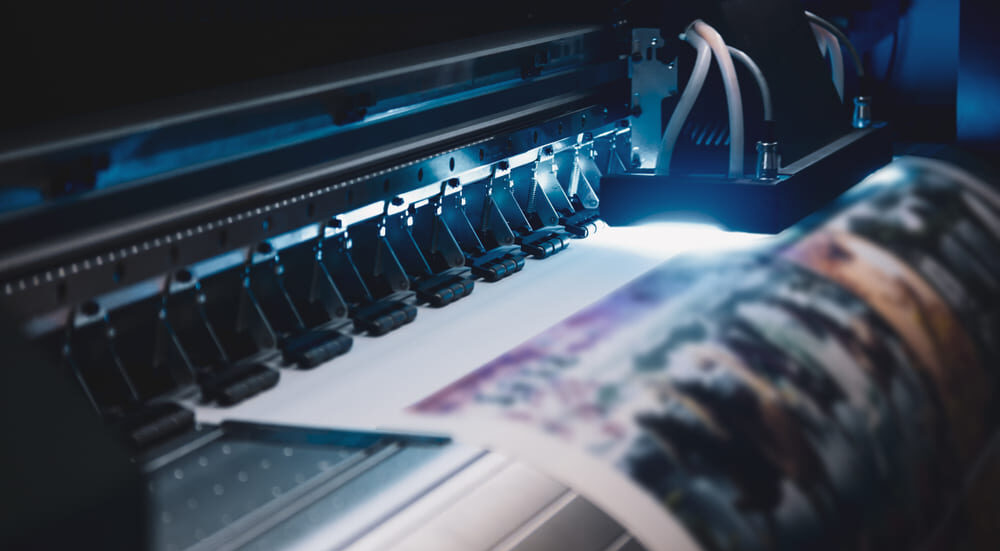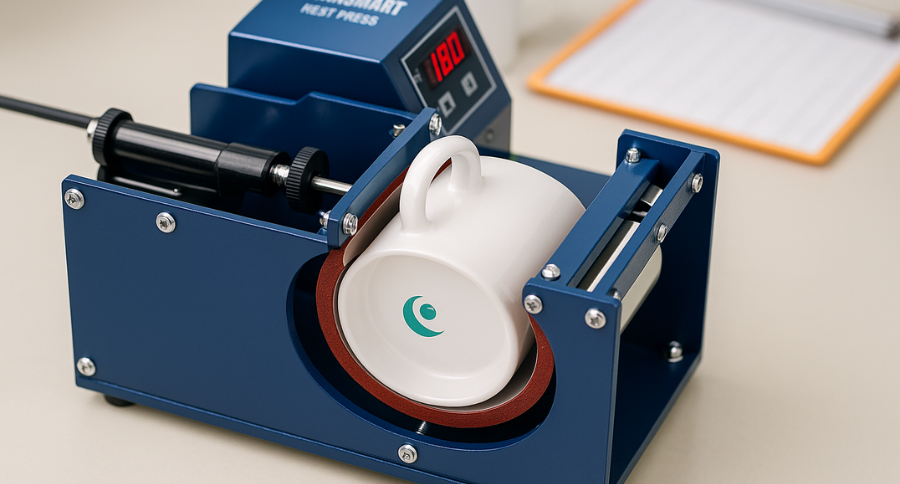Introduction
Choosing the right printing method can make or break your business, especially if you’re venturing into the world of custom merchandise. Whether you’re printing t-shirts, mugs, or posters, the method you choose will affect not just the cost, but also the quality, durability, and range of products you can offer. Today, we’ll dive into four popular printing methods: Screen Printing, DTF (Direct-to-Film) Printing, Mug Printing, and Sublimation Printing. Understanding the strengths and weaknesses of each will help you make the best decision for your needs.
Understanding Screen Printing
What is Screen Printing?
Screen printing is one of the oldest and most widely used methods in the printing industry. Originating in China over a thousand years ago, it has evolved into a sophisticated technique used for everything from t-shirts to posters. The process involves creating a stencil (or screen) and using it to apply layers of ink on the printing surface. Each color in the design requires a different screen, making the setup more complex as the design becomes more intricate.
Advantages of Screen Printing
One of the biggest advantages of screen printing is its durability. The thick layers of ink applied during the process can withstand years of wear and tear, making it ideal for items like t-shirts that need to be washed repeatedly. Additionally, screen printing is incredibly cost-effective for large orders. Once the screens are set up, the cost per item decreases significantly, making it a go-to method for bulk orders.
Limitations of Screen Printing
However, screen printing isn’t without its drawbacks. The initial setup is time-consuming and labor-intensive, especially for designs with multiple colors. This makes it less practical for small orders or designs with many colors and intricate details. Additionally, screen printing is not ideal for highly detailed artwork or designs with gradients and subtle color variations, as the process is better suited to bold and simple images.
Exploring DTF (Direct-to-Film) Printing
What is DTF Printing?
DTF (Direct-to-Film) printing is a relatively new method that’s gaining popularity for its versatility and quality. The process involves printing a design onto a special film, applying a powder adhesive, and then transferring it to the fabric using a heat press. Unlike screen printing, DTF doesn’t require a stencil, allowing for more complex and colorful designs without extensive setup.
Advantages of DTF Printing
DTF printing offers unparalleled versatility when it comes to the types of fabrics and materials you can print on. Whether you’re working with cotton, polyester, or even leather, DTF can handle it all. The colors produced are vibrant and detailed, making it perfect for intricate designs. Moreover, unlike screen printing, there’s no need to create a separate screen for each color, which significantly reduces setup time and cost for smaller orders.
Limitations of DTF Printing
On the downside, DTF printing can be more expensive on a per-item basis, particularly for larger orders. The specialized films and adhesives can add up, and while it’s great for detailed work, it might not be as cost-effective for bulk production as screen printing. Additionally, the process can take longer, especially if you’re working with multiple layers and complex designs.
Mug Printing: A Niche but Popular Choice
What is Mug Printing?
Mug printing is a niche but popular choice, particularly for personalized gifts and small businesses. This method involves printing designs on mugs using techniques like heat transfer or sublimation. While it’s limited to ceramic and similar materials, it’s a go-to for customized promotional items or personalized gifts.
Advantages of Mug Printing
One of the primary advantages of mug printing is its high-profit margins. Customized mugs are often sold at a premium, and the materials and process involved are relatively inexpensive once you have the right equipment. It’s also a straightforward process that doesn’t require as much setup time as screen printing, making it ideal for small businesses and custom orders.
Limitations of Mug Printing
The biggest limitation of mug printing is its restricted application. While you can create beautiful, detailed designs on mugs, the process isn’t versatile enough for other products. Additionally, you need specific equipment, such as a mug heat press, which can be a significant upfront investment.
Diving into Sublimation Printing
What is Sublimation Printing?
Sublimation printing is a fascinating process that involves transferring dye onto materials using heat. The unique aspect of sublimation is that the dye turns into gas and becomes part of the material itself, rather than sitting on top of it. This allows for incredibly vibrant, durable prints that are perfect for a wide range of products, from fabrics to ceramics.
Advantages of Sublimation Printing
Sublimation printing shines when it comes to producing high-quality, full-color images. The process allows for smooth gradients and photographic prints that are nearly impossible to achieve with other methods. It’s also incredibly versatile—you can print on fabrics, mugs, phone cases, and more, as long as the material is polyester-based or polymer-coated.
Limitations of Sublimation Printing
Despite its advantages, sublimation printing has its limitations. The process is restricted to materials with a high polyester content or a special polymer coating, which limits your product options. Additionally, the initial investment in sublimation printers and inks can be higher than other methods, making it less accessible for those just starting out.
Comparing the Four Printing Methods
Cost Comparison
When it comes to cost, screen printing is generally the most cost-effective for large orders, thanks to its low per-item cost after setup. DTF printing, while versatile and detailed, tends to be more expensive, especially for bulk orders. Mug printing is relatively low-cost but is limited to specific products. Sublimation can be costly due to the need for specialized equipment and materials but offers excellent quality for the price.
Quality and Durability
In terms of durability, screen printing and sublimation are top contenders. Screen printing’s thick ink layers ensure longevity, while sublimation’s unique process embeds the ink into the material. DTF also offers durable results but can’t quite match the longevity of the other two methods. Mug printing, when done properly, can last for years without fading, but this depends on the quality of the materials used.
Versatility
DTF and sublimation printing lead in versatility. DTF can be used on a wide variety of materials, while sublimation works across many product types, provided they are polymer-coated. Screen printing, while versatile, is best suited to flat surfaces and simple designs. Mug printing, as the name suggests, is specialized but limited in application.
Ease of Use and Accessibility
Mug printing and sublimation are relatively easy to learn and accessible for beginners, though they require specific equipment. Screen printing has a steeper learning curve and requires more setup but is straightforward once mastered. DTF printing falls somewhere in the middle, with a moderate learning curve and equipment needs.
Choosing the Right Method for Your Needs
Assessing Your Business Goals
The first step in choosing the right printing method is understanding your business goals. Are you looking to produce large volumes of t-shirts, or are you focused on creating personalized gifts like mugs? Screen printing might be your best bet for bulk apparel, while sublimation could be ideal for high-quality, varied products.
Considering Budget and Resources
Your budget will also play a crucial role in your decision. Screen printing and mug printing require significant initial investments but offer lower costs per item in the long run. DTF and sublimation may have higher upfront and per-item costs but offer more versatility and detail.
Balancing Quality and Quantity
Finally, consider whether you prioritize quality or quantity. Screen printing and sublimation provide high durability and quality, ideal for products that need to last. DTF is perfect for detailed, vibrant designs, while mug printing is great for small, personalized batches.
Conclusion
Choosing the right printing method requires careful consideration of your business goals, budget, and the types of products you want to create. Each method—Screen Printing, DTF, Mug Printing, and Sublimation—has its own strengths and weaknesses. By understanding these, you can make an informed decision that will set your business up for success.
FAQs
- What is the most cost-effective printing method for small businesses?
- Screen printing is generally the most cost-effective for large orders, but mug printing can be highly profitable for small, personalized batches.
- Can I use multiple printing methods for different products?
- Yes, many businesses use a combination of methods to meet various needs, such as using sublimation for mugs and screen printing for t-shirts.
- How do I maintain the quality of prints over time?
- Proper care, such as washing printed garments inside out and avoiding harsh chemicals, can help maintain print quality, regardless of the method used.
- Which printing method is best for detailed and vibrant designs?
- DTF and sublimation are best for detailed and vibrant designs due to their ability to handle intricate artwork and produce rich colors.
- What equipment is necessary to start a printing business?
- The necessary equipment depends on the method you choose. For screen printing, you’ll need screens and ink; for sublimation, a sublimation printer and heat press; for DTF, a DTF printer and film; and for mug printing, a mug press and transfer paper.






